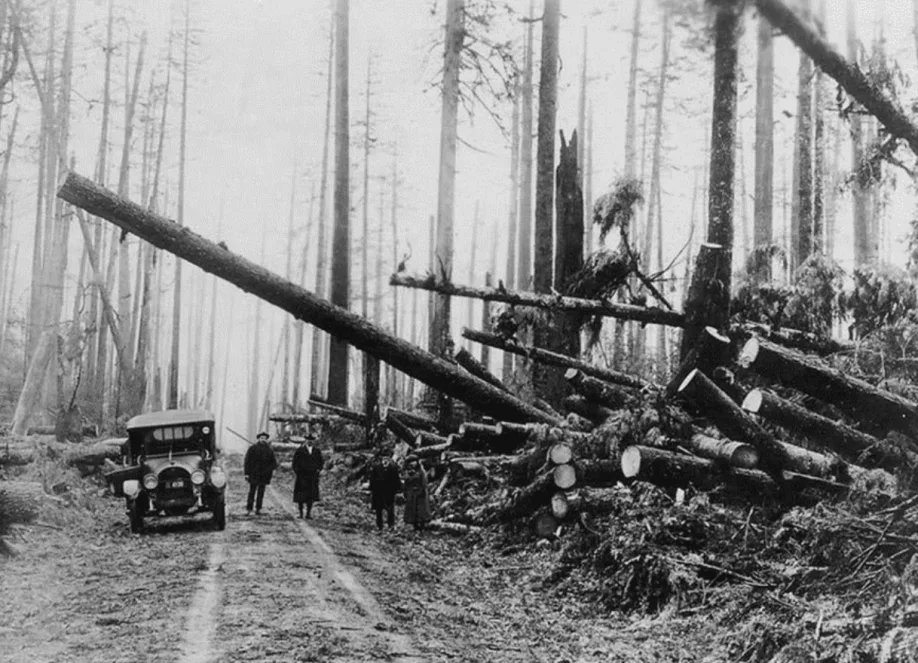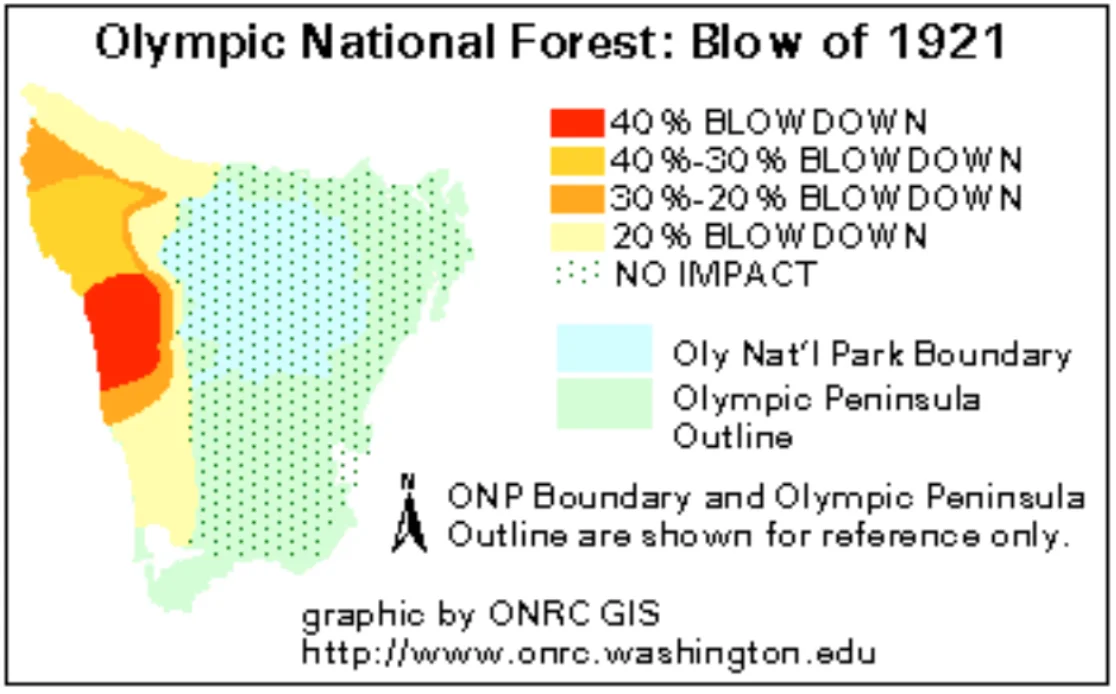
More than a century since the Big Blow — thousands of trees were destroyed
The windstorm destroyed an immense amount of timber along the coast of the Olympic Peninsula.
This Day In Weather History is a daily podcast by Chris Mei from The Weather Network, featuring stories about people, communities and events and how weather impacted them.
--
The Great Olympic Blowdown, also called the Big Blow, earned its name by being a once-in-a-100-year windstorm that hit the coast of Washington, along the Olympic Peninsula, on Jan. 29, 1921.
The storm took out a mass amount of trees. According to the U.S. Department of Agriculture Forest Service, the windstorm destroyed the largest amount of timber in the country. To date, only the Columbus Day Storm of 1962 has been stronger.
A weather bureau observer for the North Head was monitoring the storm when they and "Mrs. Hill" decided to head to the post office in Ilwaco.
This is all according to a report compiled by Wolf Read.
They made it to Ilwaco, and after some quick car troubles, they headed back to the office. The report reads, "The road from Ilwaco to North Head is through a heavy forest of spruce and hemlock timber for some distance. On the return trip shortly before reaching the heavy timber, the wind came with quite a heavy gust. We saw the top of a rotted tree break off and fall out of sight in the brush."
Things rapidly escalated.

*The 1921 "blowdown" knocked over thousands of trees on the Olympic Peninsula, making travel difficult for settlers along the Hoh River Trail. Courtesy of A. Curtis, courtesy of Washington State Historical Society*
The pair abandoned their car after getting stuck at an immense spruce tree laying across the road. The report says, "Just after leaving the car, I chanced to look up and saw a limb sailing through the air toward us; I caught Mrs. Hill by the hand and we ran; and instant later the limb, which was about 12 inches in diameter, crashed where it had stood."
The windstorm was compact and fierce, with winds reaching 160 km/h.
No tree was safe.
Billions of board-feet of timber across the Olympic Peninsula was destroyed. More than 40 per cent of the trees on the southwest side of the Olympic Mountains were blown over.

Courtesy of the Olympic Natural Resources Center
Timbering trees and flying debris killed hundreds of farm animals and a herd of 200 Roosevelt elk.
The trees also crushed 16 homes in La Push.
The only human fatality was Chief engineer Alfred A. Anderson, who was killed at a mill after a smokestack collapsed, filling the room with steam.
To hear more about the Great Olympic Blowdown, listen to today' episode of "This Day In Weather History."
Subscribe to 'This Day in Weather History': Apple Podcasts | Amazon Alexa | Google Assistant | Spotify | Google Podcasts | iHeartRadio | Overcast'
Thumbnail image courtesy of National Archives and Records Administration RG#95-GP